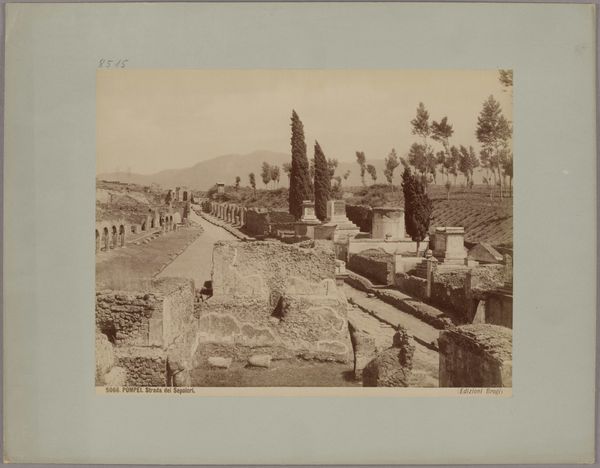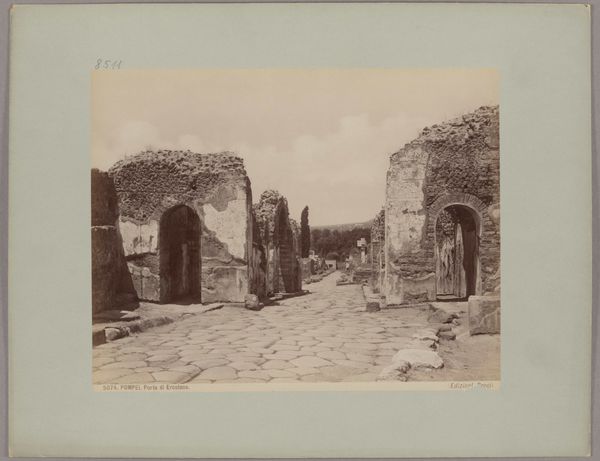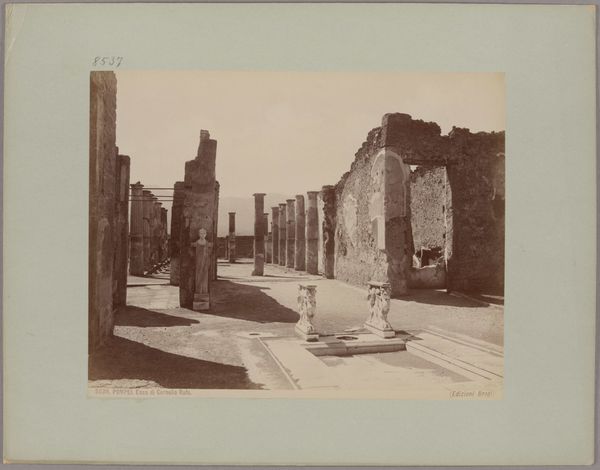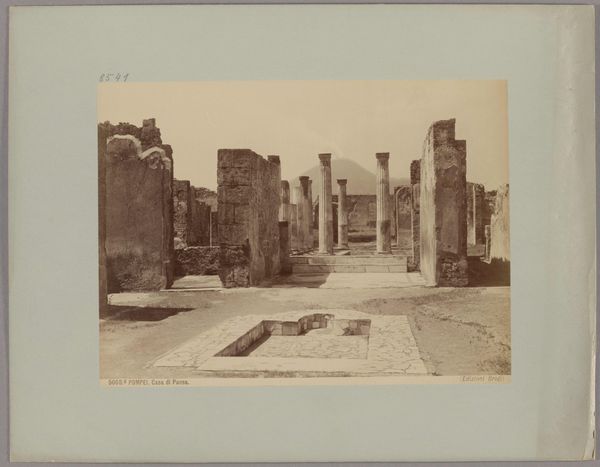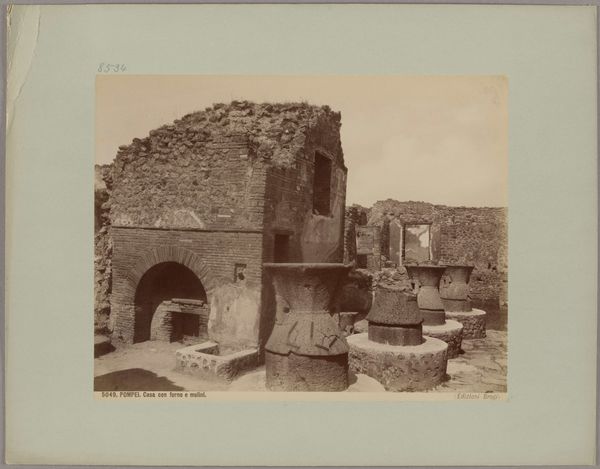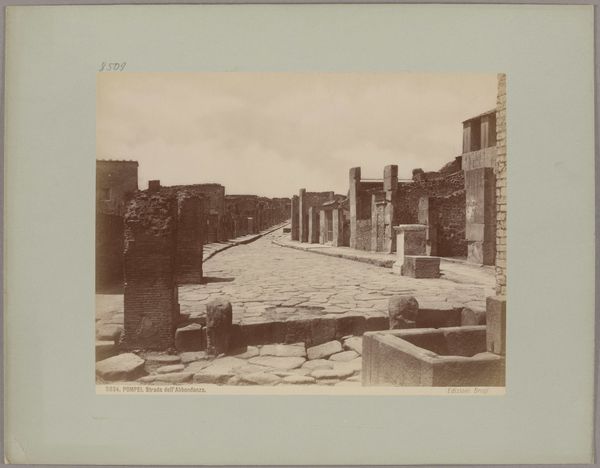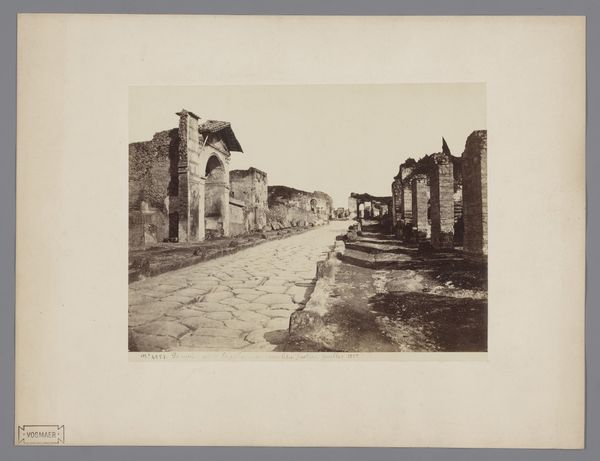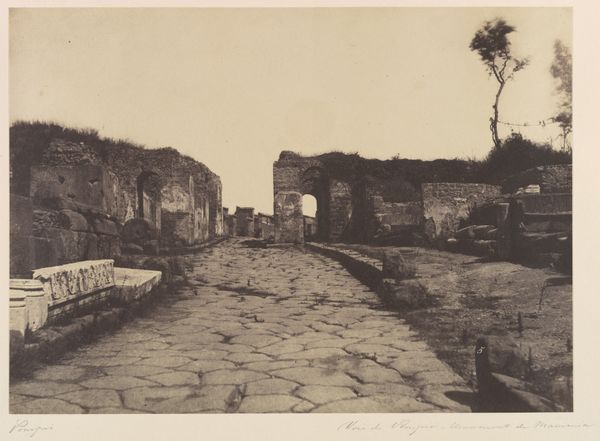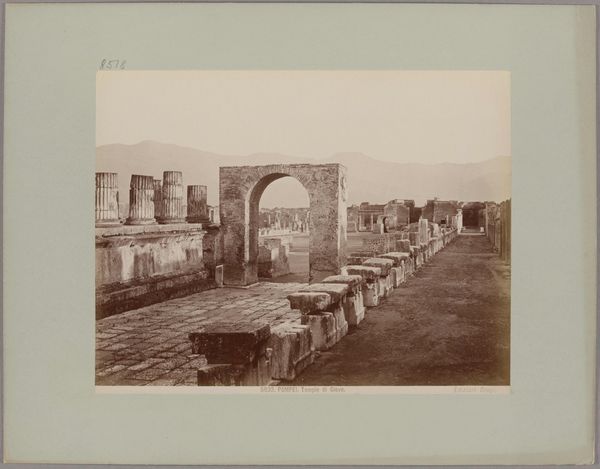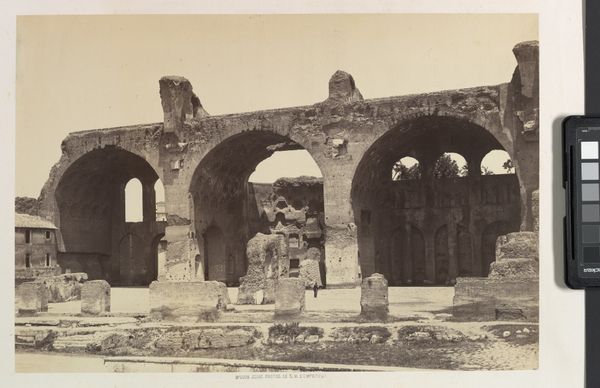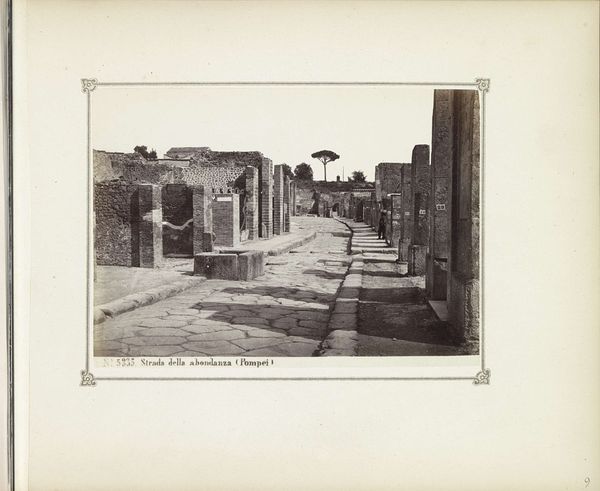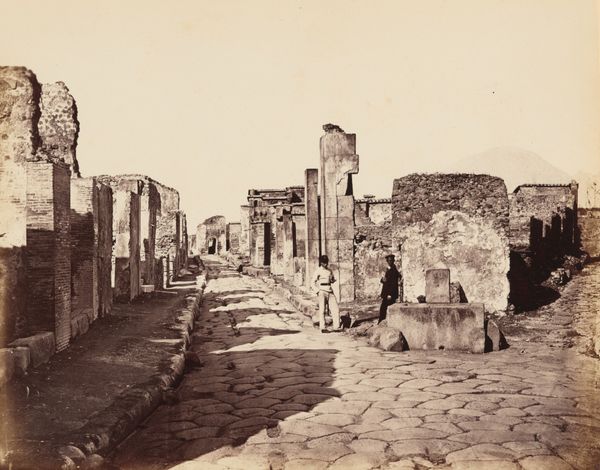
albumen-print, paper, photography, albumen-print, architecture
#
albumen-print
#
tree
#
16_19th-century
#
landscape
#
paper
#
photography
#
ancient-mediterranean
#
cityscape
#
academic-art
#
albumen-print
#
architecture
Copyright: Public Domain
Curator: This is Giacomo Brogi's photograph, "Pompeii, Sepulchre Road, No. 5064," an albumen print dating from about 1870 to 1880. It depicts a streetscape in the ancient Roman city. Editor: It has such a melancholic air. The ruins are beautifully captured but there’s a distinct sense of loss. And the roughness of the road, the heavy stonework; you feel the weight of history. Curator: Brogi and other photographers were crucial in documenting archaeological sites for both scholarly purposes and for popular consumption. This image contributed to the romanticized vision of the classical world that was then in vogue, influencing art and design. Editor: The albumen print process itself adds to the historical feel. Look closely at the tonality and how it interacts with the stone; the technique certainly highlighted the material decay and age of the scene. The very method accentuates time's effects. Curator: Absolutely. Photography served as a vital tool in constructing and disseminating ideas about the past. These images shaped public understanding of ancient cultures and helped legitimize archaeological endeavors. Editor: But think of the labor! From quarrying the stone, shaping it, the sheer amount of time it must have taken to construct these buildings, roads and tombs—all exposed through the patient lens and darkroom alchemy. And, what stories these stones could tell! Curator: These photographs often played a significant role in shaping national identity and cultural heritage. Think of how images of Rome, Athens, and Egypt circulated, solidifying a European connection to the past, as well as colonial agendas. Editor: A reminder, though, that while we contemplate the 'grandeur' of ruins, the photographic process used to document this involves exploitative extraction practices of its own, in sourcing silver or other crucial materials... Food for thought. Curator: Indeed. The image is not just a static record, but a reflection of contemporary ideologies and power dynamics. It’s held in our collection in Städel Museum now, still influencing understanding today. Editor: Precisely; hopefully our little discussion enables a fuller consideration of just how much a single landscape view really offers in its textured and processed surface. Thank you!
Comments
No comments
Be the first to comment and join the conversation on the ultimate creative platform.
